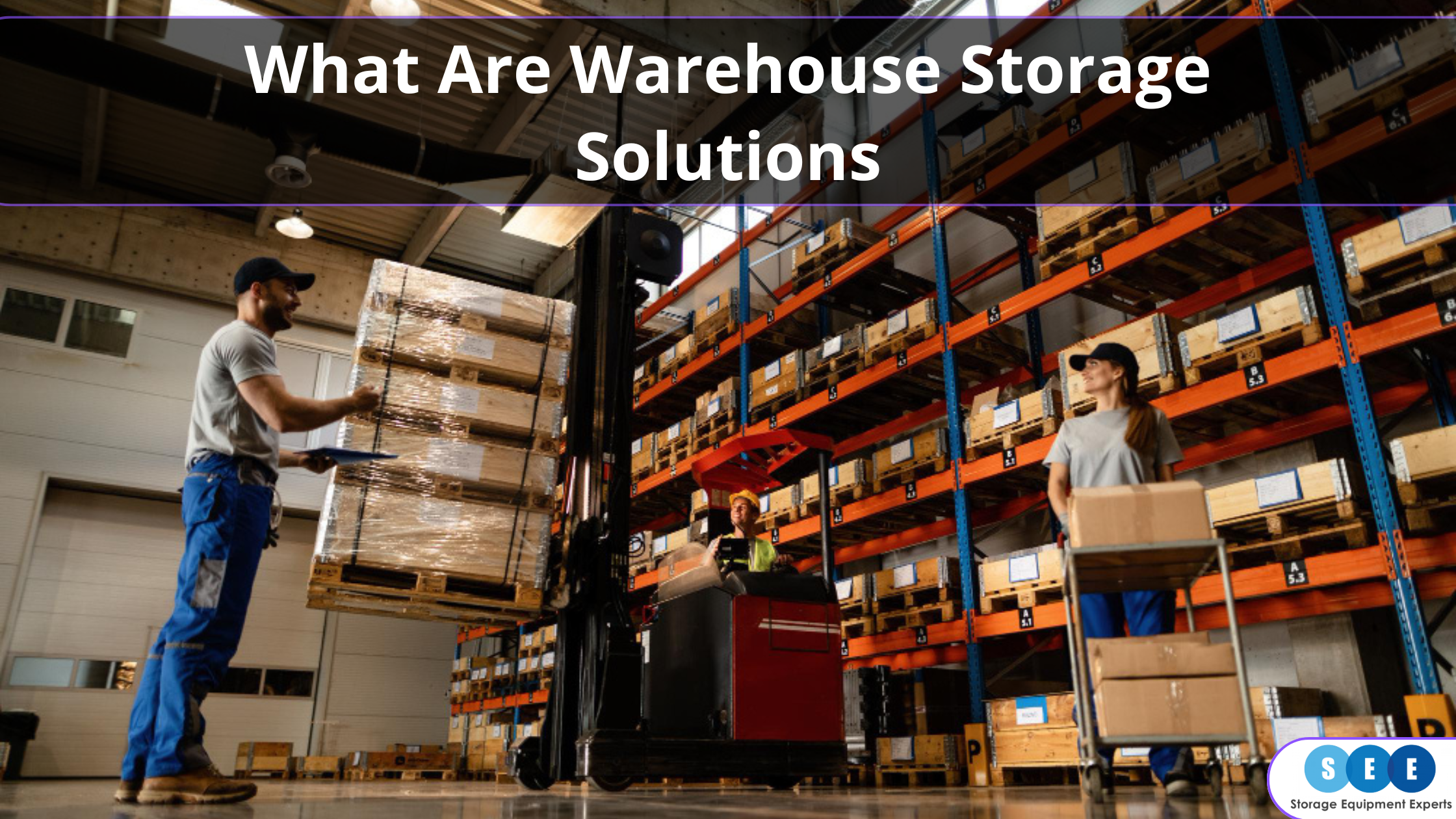What Are Warehouse Storage Solutions, and What Are the Different Types?
Within the warehousing and distribution industry, we often talk about ‘warehouse storage solutions’ (or just ‘storage solutions’) – but what does this actually mean?
If you’re new to the warehouse world, or if you need a refresher on the key terms, then SEE Racking Inspections is here to help with our comprehensive blog.
What are Warehouse Storage Solutions?
Warehouses are, at their core, expansive storage and distribution areas. Whatever type or types of goods are being handled are typically stored en masse, ready for sending out to the next stop on the journey to the end-user/consumer.
This requires not just storage but also ease of access. It’s got to be easy and quick for warehouse workers to find exactly what they need, in the quantities they need it, and to ensure that stock is rotated as necessary. Warehouse storage solutions are used to ensure that this aspect of the operations is as seamless and efficient as possible.
Understanding Warehouse Storage Solutions
More often than not, equipment like forklift trucks, pallet trucks, trolleys and wheeled cages are used to help with the picking and movement of goods. That means any type of storage solution for the warehouse has to be designed for robust, frequent use.
As these storage solutions often hold particularly heavy weights, can be knocked into or jarred multiple times a day, and are in areas with high volumes of other stock, expensive equipment, and personnel, safety is an absolute priority.
Not just any rack of shelving unit is appropriate, it needs to be designed, manufactured, and installed with the expectation that it’s going to be treated roughly. Just one shelving unit collapsing or falling over into another can cause a host of issues – the least of all is interrupted operations and moving through stock loss to equipment damage and, ultimately, injury to staff.
Types of Warehouse Storage Solutions
‘Warehouse storage solutions’ is something of a catch-all term, describing a variety of systems designed to efficiently store goods, materials, and products. These solutions range from pallet racking systems, which are ideal for handling large, bulky items, to automated storage and retrieval systems (AS/RS) that offer precision and speed in managing inventory.
Each solution is designed to cater to different types of goods, whether bulky items, perishable products, or small, lightweight goods. Understanding the available storage options is key to tailoring the warehouse setup to accommodate specific inventory types and operational demands.
- Pallet Racking Systems: These warehouse storage racks include selective racking for easy access to a wide variety of goods, drive-in racking for dense storage of similar products, and cantilever racking, ideal for long, bulky items.
- Shelving Systems: Shelving units are suited for smaller items, offering versatile design options and applications distinct from pallet racking, facilitating organized storage and accessibility.
- Automated Warehouse Systems: Advanced options like AS/RS and carousel storage systems significantly enhance efficiency and space utilization, automating inventory management and retrieval processes.
- Specialty Storage: For industry-specific needs, specialised solutions are available, including storage for hazardous materials or temperature-controlled units for perishable goods.
Factors Influencing the Choice of Storage Solutions
Which storage solution you choose will come down to a few different factors:
- Space Availability: The warehouse’s physical layout and space constraints will impact which type of solution you can have.
- Type of Inventory: The nature of the items stored, including their size, weight, and turnover rate, is another important consideration.
- Accessibility Requirements: How frequently items need to be accessed should also affect your choice of storage system, as you will want to balance efficiency with operational demands.
Benefits of Optimised Warehouse Storage Solutions
Optimising your warehouse storage solutions should bring a number of advantages – by implementing the right systems, you can significantly streamline operations which leads to a reduction in time and resources spent on inventory management. This optimisation results in a smoother workflow and quicker response times to market demands.
Enhanced efficiency is just one piece of the puzzle; as mentioned, improved safety is another critical benefit. Proper storage solutions minimise the risks associated with manual handling and the storage of goods, contributing to a safer work environment for employees.
Adopting innovative storage options also maximises the use of available space, letting you accommodate a larger inventory. This increase in storage capacity supports scalability, allowing businesses to expand operations without the immediate need for physical expansion.
In essence, carefully chosen storage solutions provide a solid foundation for operational excellence, employee safety, and business growth.
Challenges in Implementing Storage Solutions
Implementing new warehouse storage solutions presents a set of challenges, with budget typically at the top of the list. These storage solution systems are rarely inexpensive, but it’s important to assess the return on investment before ruling anything in or out.
Something else to consider is integration with existing systems, as new solutions must seamlessly work with current operations without disrupting workflow or the ROI will once again be affected.
These challenges (and any others that are more unique to you and your site) will require planning and a strategic approach. Engaging with experienced storage solution providers can offer valuable insights into selecting the most compatible systems. Additionally, phased implementation strategies and pilot programs can help in mitigating risks, ensuring a smoother transition to new storage solutions.
Conclusion
Throughout this guide, we’ve explored the significance of selecting and implementing the right storage systems to enhance warehouse efficiency, improve safety, and maximize storage capacity. It should be clear now that warehouse storage solutions are perhaps the biggest driver when it comes to optimising warehouse operations and fueling business growth – however, fully optimising the warehouse requires strategic planning, careful selection of storage solutions, and an awareness of the latest trends and challenges in the industry.
Check out the SEE Racking Inspections blog for more news and insights, and reach out to one of our expert team-members to discuss your racking safety needs.

